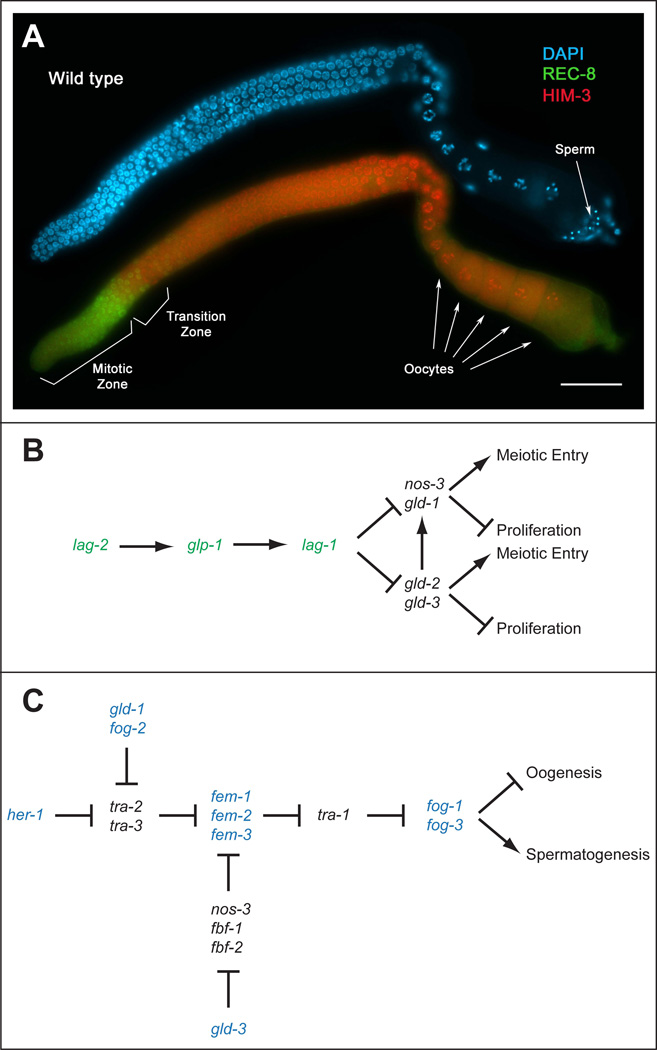Figure 1.
The proliferation/differentiation balance and sex determination in the C. elegans germ line. (A) A wild-type adult (one day past the fourth larval stage) hermaphrodite dissected gonad arm stained with DAPI (blue) to visualize nuclear morphology, anti-REC-8 antibodies (green) to mark mitotically cycling cells, and anti-HIM-3 antibodies (red) to mark meiotic cells. Distal is to the left, with mitotic or proliferative cells existing in the distal end of the gonad arm. Cells move proximally, entering meiosis in the transition zone, and eventually forming first sperm, then oocytes. Scale bar =20 microns. (B) A simplified genetic pathway showing genes involved in regulating the proliferation vs. differentiation decision in the C. elegans germ line. Genes that promote proliferation are shown in green, while genes that inhibit proliferation and/or promote meiotic entry are shown in black. lag-2, glp-1 and lag-2, which encode components of the core Notch signaling pathway, through a number of intermediates, inhibit the activities of genes in two redundant downstream pathways, referred to as the gld-1 and gld-2 pathways. As cells move away from the distal end of the gonad, the gld-1 and gld-2 pathways become active, thereby promoting meiotic entry (differentiation) and/or inhibiting proliferation. Adapted from (Hansen and Schedl, 2006) (C) A simplified genetic pathway showing the genetic relationships between genes involved in regulating sex determination in the C. elegans germ line. Genes that promote the male fate are shown in blue, while genes that promote the female fate are shown in black. Hermaphrodites first produce sperm, and then a switch is made during development such that adult hermaphrodites produce oocytes. Adapted from (Ellis and Schedl, 2006).

